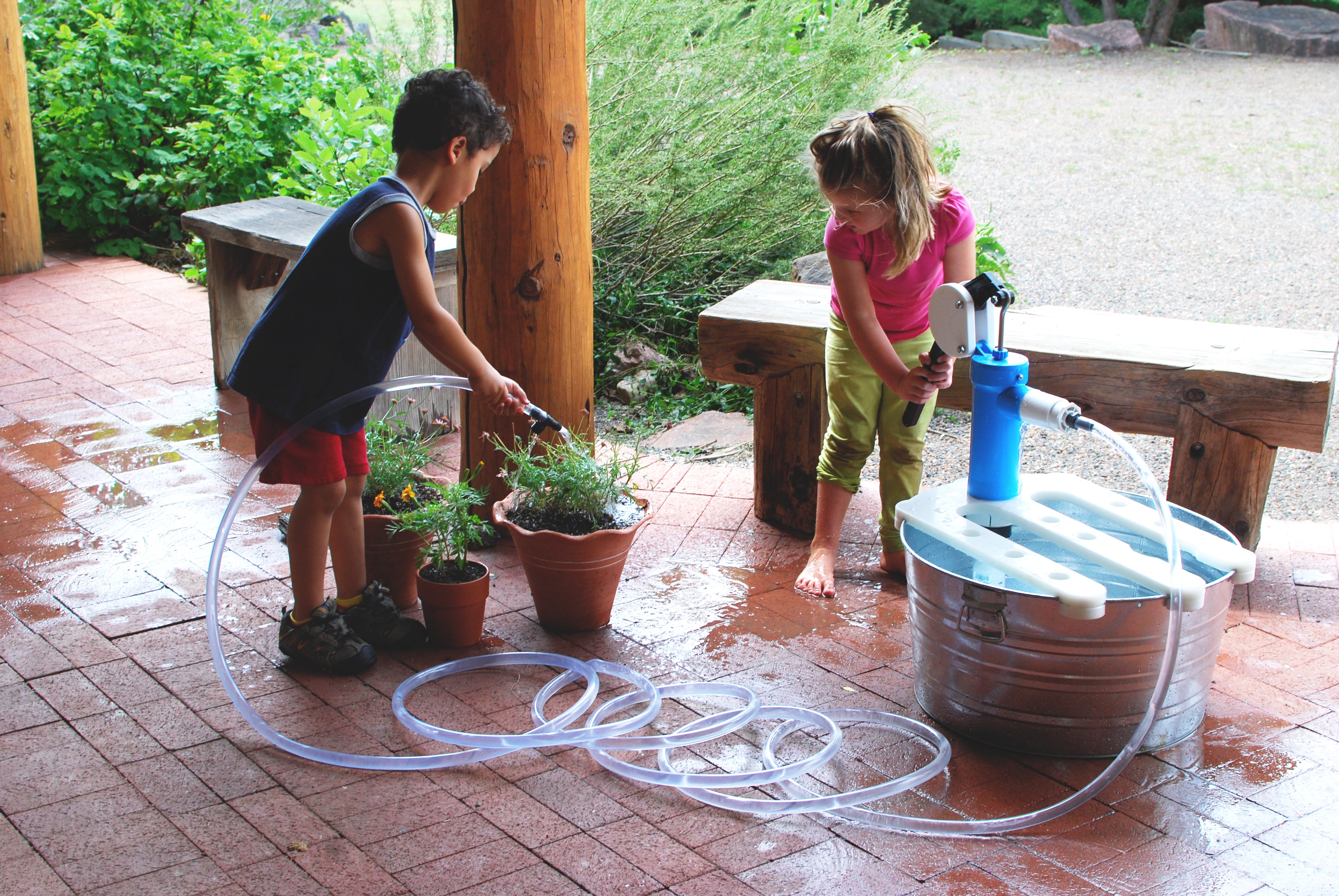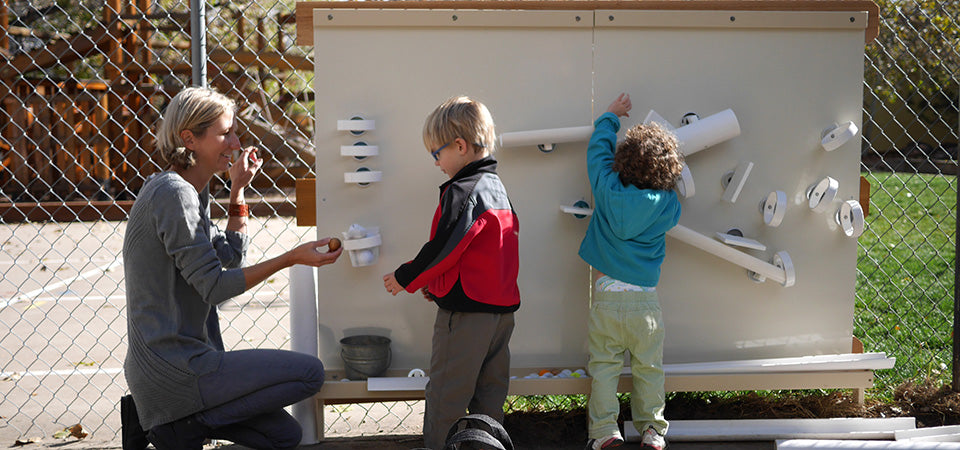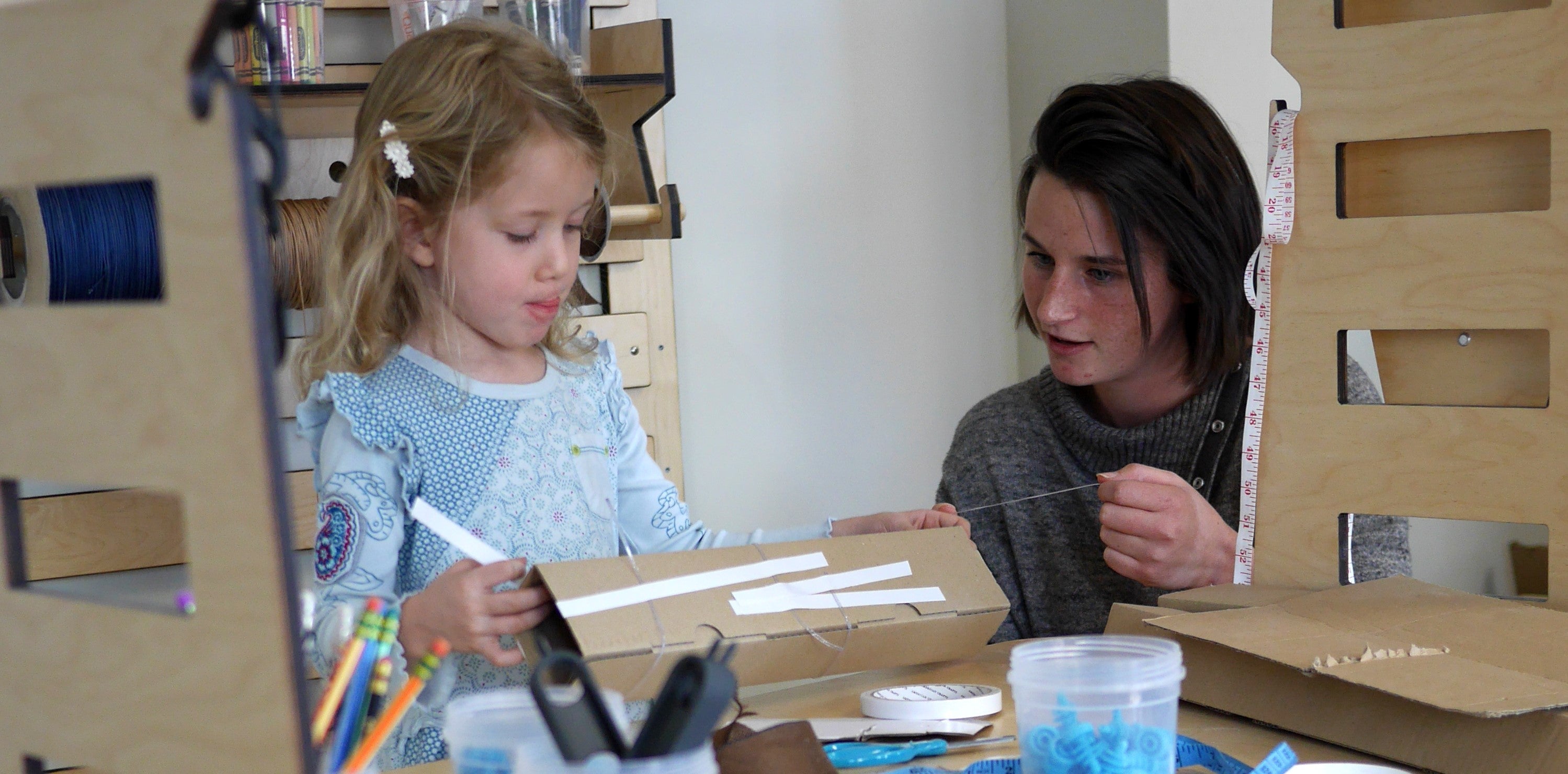On January 27th, Miriam Beloglovsky and Kodo had the wonderful opportunity to present the webinar, Provoking Inquiry with Loose Parts, in collaboration with Early Childhood Investigations. With that, we received such thoughtful and meaningful questions around Loose Parts. Throughout the next several weeks, we will continue the conversation with you by answering some of the questions that were presented to us.
Disclaimer: The information provided by Kodo Kids and Playful Transformation within this blog is for general information only. All information within the blog is for informational purposes only. For further information on sanitation protocols, please refer to the Center for Disease Control, State Health Guidelines, and program specific policies and procedures. We recommend looking at the state licensing standards, the CDC and local health professionals to provide guidelines and recommendations for cleaning and sanitation methods.
Thank you for your questions regarding using Loose Parts by age group. We’re excited to continue the conversation. Let’s begin by addressing some of your questions about toddlers.

You asked:
Is play with loose parts appropriate for toddlers? Is there a list of acceptable parts for infants and toddlers? Where do I get loose parts that are safe? Is it possible to have loose parts in a classroom full of toddlers with only 2 caregivers?
Infants and Toddlers are natural explorers. They love to test the limits of their own skills, their surroundings, and all manner of objects within reach. When it comes to objects, infants and toddlers enjoy and benefit from having a wide variety of textures, colors, shapes, and sizes. Getting started can be as simple as collecting some pot lids or a variety of sturdy napkin rings.
We suggest you and your colleagues make a list of Loose Parts that are acceptable within your program’s guidelines and invite families to participate in the collection process. It is often helpful to have a basket with a photo of the Loose Part you want. Families will be able to focus their interest and energy in helping you collect specific items. Include materials that can be easily found or purchased giving consideration to the affordances of each type of part. Look for parts that might be easy to grasp, have interesting colors, can be mouthed safely, and inspire you and your education teams to organize and offer them in interesting combinations.
Educators are the best form of safety. When Loose Parts are curated for safety and engagement it facilitates the process of supervision. Toddlers will be motivated to freely explore and their creativity will lead them to stay focused. We would certainly all agree that when children are focused adults have more opportunity for facilitation and observation. The book Loose Parts 2: Inspiring Play for Young Children offers a variety of Loose Parts that are safe and easily collectable. Kodo has worked with Miriam Beloglosky to curate Loose Parts that are safe for Infants and Toddlers, we hope they inspire you as you create your own collections.

You asked:
What kinds of loose parts are appropriate for preschoolers? Is there a liability concern with loose parts materials (other than obvious hazards) since they are not evaluated or approved by ANSI or CPSC?
Any questions you have regarding liability must be addressed by your program’s administration or State Licensing Agency. Children’s safety comes first and foremost. We do recommend that you exercise caution when selecting found Loose Parts. Begin with items typically safety tested for their original use, such as the plastic lids of food storage containers, canning jar rings, acrylic gift boxes that are food safe, and so on. Most programs, virtually all curricula, and classroom rating scales suggest or mention the inclusion of natural materials within your learning space. You most likely already have a number of natural Loose Parts such as pebbles, sticks, and seashells. Think about increasing their quantity or variety. Many programs opt to use manufactured Loose Parts that have been safety tested. At Kodo, we have been working hard to satisfy this need by creating and curating some wonderful parts with our trusted colleague, Miriam Belovglosky!
Preschoolers are just as curious and capable as toddlers when it comes to exploring their surroundings and the materials within it. As they acquire language, hone 21st Century Learning skills, and share space and materials, open-ended Loose Parts give preschoolers opportunity for meaning making, problem-solving, and creative expression.
There are countless Loose Parts that you could introduce to preschoolers. In fact, a list would be almost impossible to make. Let the children’s interests guide the process. Observe and listen to their ideas, stories, and theories. We’d like to remind you that when thinking about selecting materials keep in mind that Loose Parts is an educational philosophy that requires reflection and intentionality. Think about how a material can further or deepen children’s understanding. The more affordances that a Loose Part offers, the more opportunities children have to explore freely. For instance children can perceive a block as a car, a brick for a wall, a telephone, or anything else they imagine. What is important is for educators to be open minded about a material’s use and to refrain from defining the purpose or meaning of a particular part. When you are selecting and collecting the Loose Parts, always consider their affordances. ( Learn more about Affordance Theory by visiting Playful Transformation.com)

You asked:
Do school-age children like using loose parts? What kinds of parts are appropriate for school-age?
School-age children love loose parts. They’re especially fond of using them when it comes to creating models, storytelling, designing, mapping, and tinkering. Using concrete materials to explain their thinking and try out new ideas is very valuable! In general terms school-age children use Loose Parts in symbolic, architectural, and mechanical ways. They often apply practices similar to structural engineers and will inevitably use them to explore many art forms, such as sculpture and composition. Loose parts also support school-age children to meet educational standards. School age children will also develop critical thinking, problem solving skills, creativity, love for learning, and a global perspective, which are skills outlined by 21st Century Learning. As they become familiar with the properties and affordances of each type of part, children’s creations and explorations can become quite complex.
Each of us have personally observed school-age children using Loose Parts in many ways. A few examples are as follows:
- To explain how water travels from the mountains down to the ocean
- To test and compare the stability of various types of structural materials
- To create models of community gardens, parks, cities, subway systems, and space stations
- To design and create large mandalas on a basketball court
- To act out a collaborative story with roles of farmer, grocer, clerk, and customers
- To demonstrate the physics of gravity
- To compute how many glasses of water would fill a classroom
- To explore force and trajectory of objects
- To experience cause and effect as they manipulate objects to achieve a goal
- To engage in collaboration and team building as they work together to create a transient art mural using loose parts
We could fill volumes with examples.
By the time children reach primary school they have a sensibility about space. If you wish to offer Loose Parts experiences in, for example, a large outdoor space, gymnasium, or atrium, choose large scale parts. These could include things such as tree stumps, pails, pipe fittings, traffic cones, cardboard boxes and tubes, gutters, and large rocks. Conversely in small spaces or for tabletop exploration, choose small parts such as wooden spools, cones, fabric scraps, drink coasters, and one of our collective personal favorites, a button collection.
There are so many wonderful natural, found, and manufactured Loose Parts for children to explore at home, in family child care settings, in preschool, and school-age programs. The wonderful thing about Loose Parts is that it helps children know who they are so that they may go forward into adulthood with the confidence they need to thrive. In a world where knowledge is changing so swiftly, it’s critical that children have the knowledge, abilities, character traits, and work behaviors that are believed to be critical for navigating in the unknown future of the 21st century. We’re positive that as you begin to incorporate the Loose Parts educational philosophy you will recognize just how valuable open-ended Loose Parts can be!

Jump to last weeks blog post, Loose Parts & COVID.
Missed registering and attending the Webinar? View a recorded version by registering here.
Download directions for making a paper small parts tester:










Share:
Loose Parts and COVID
Displaying and Organizing Loose Parts